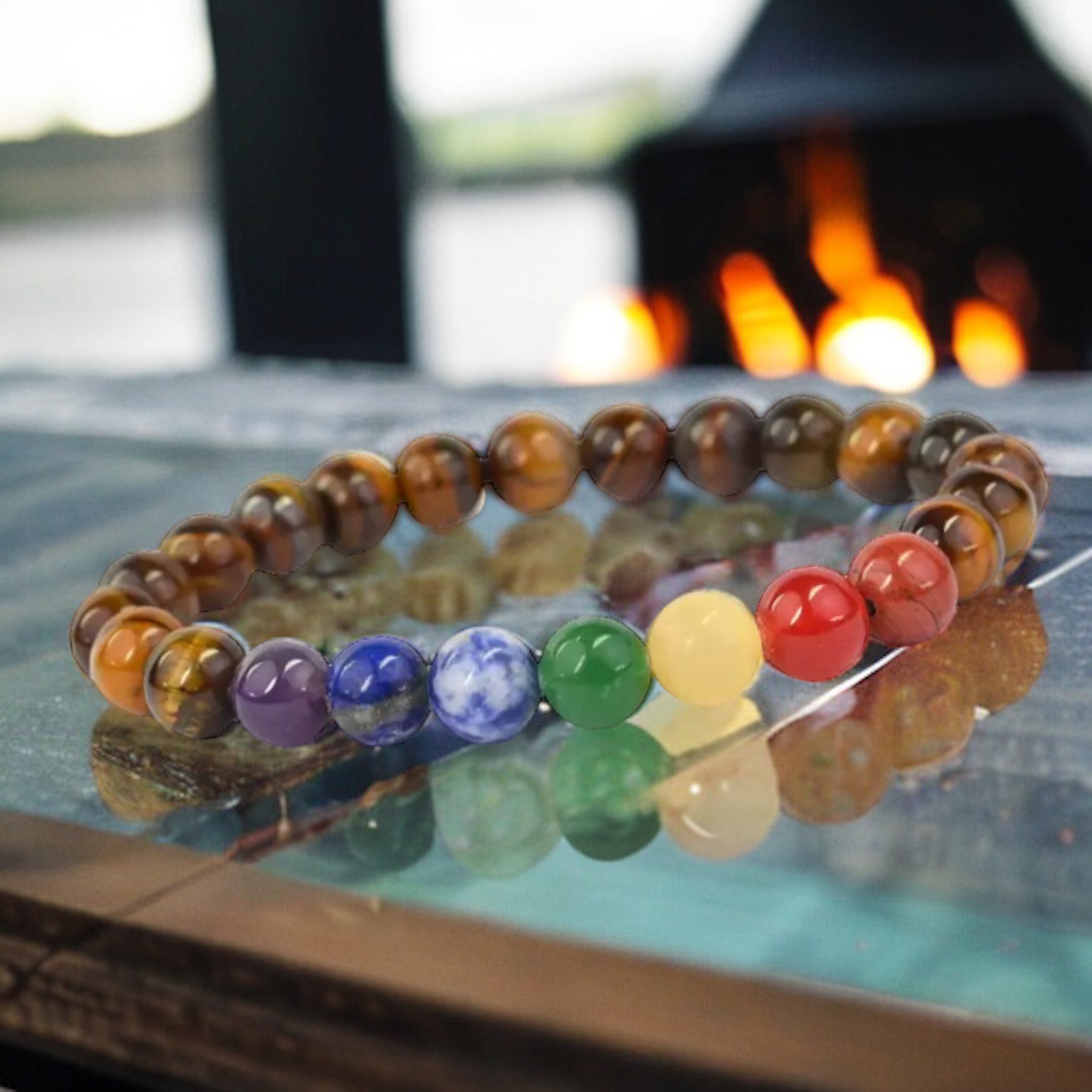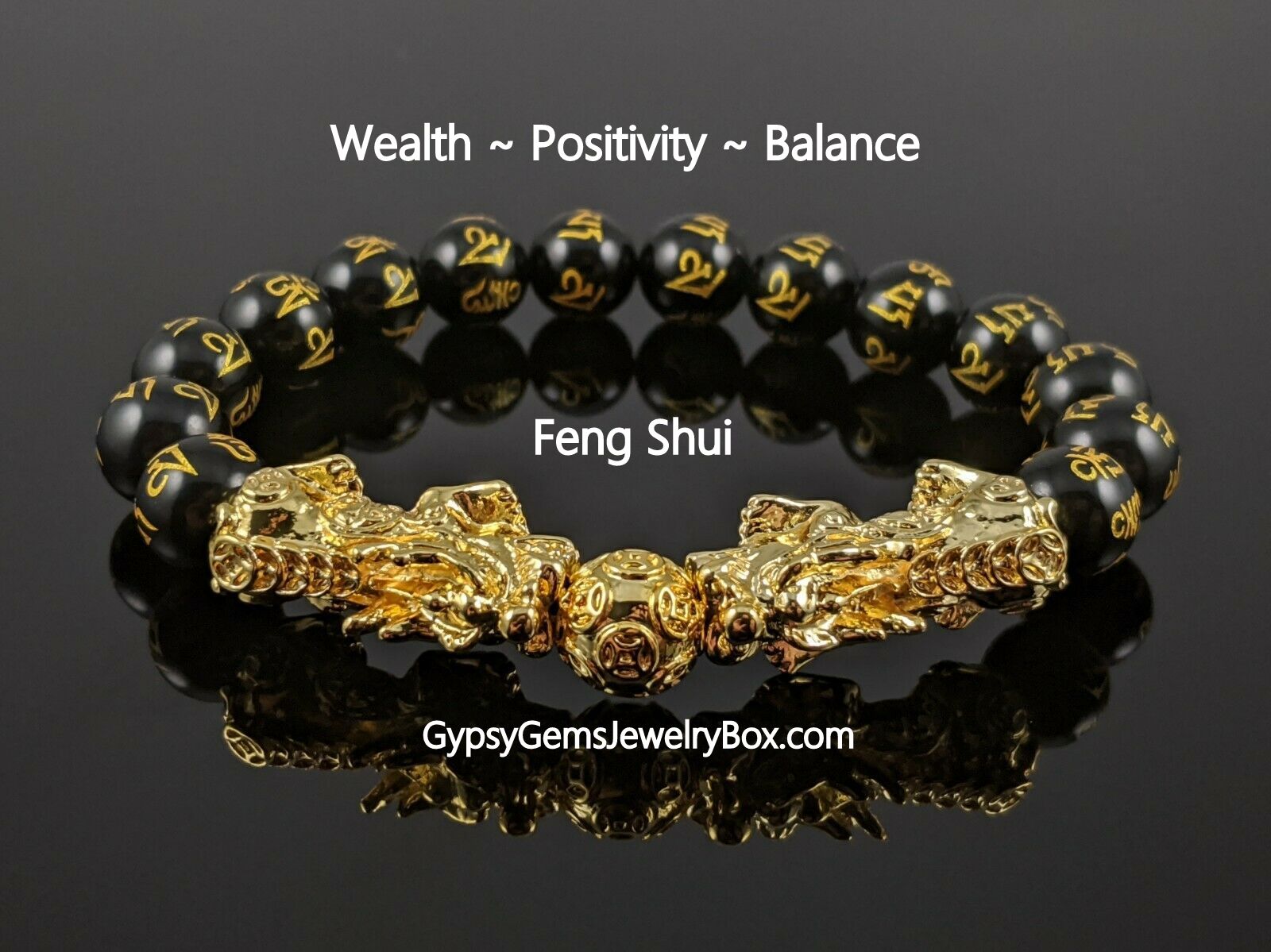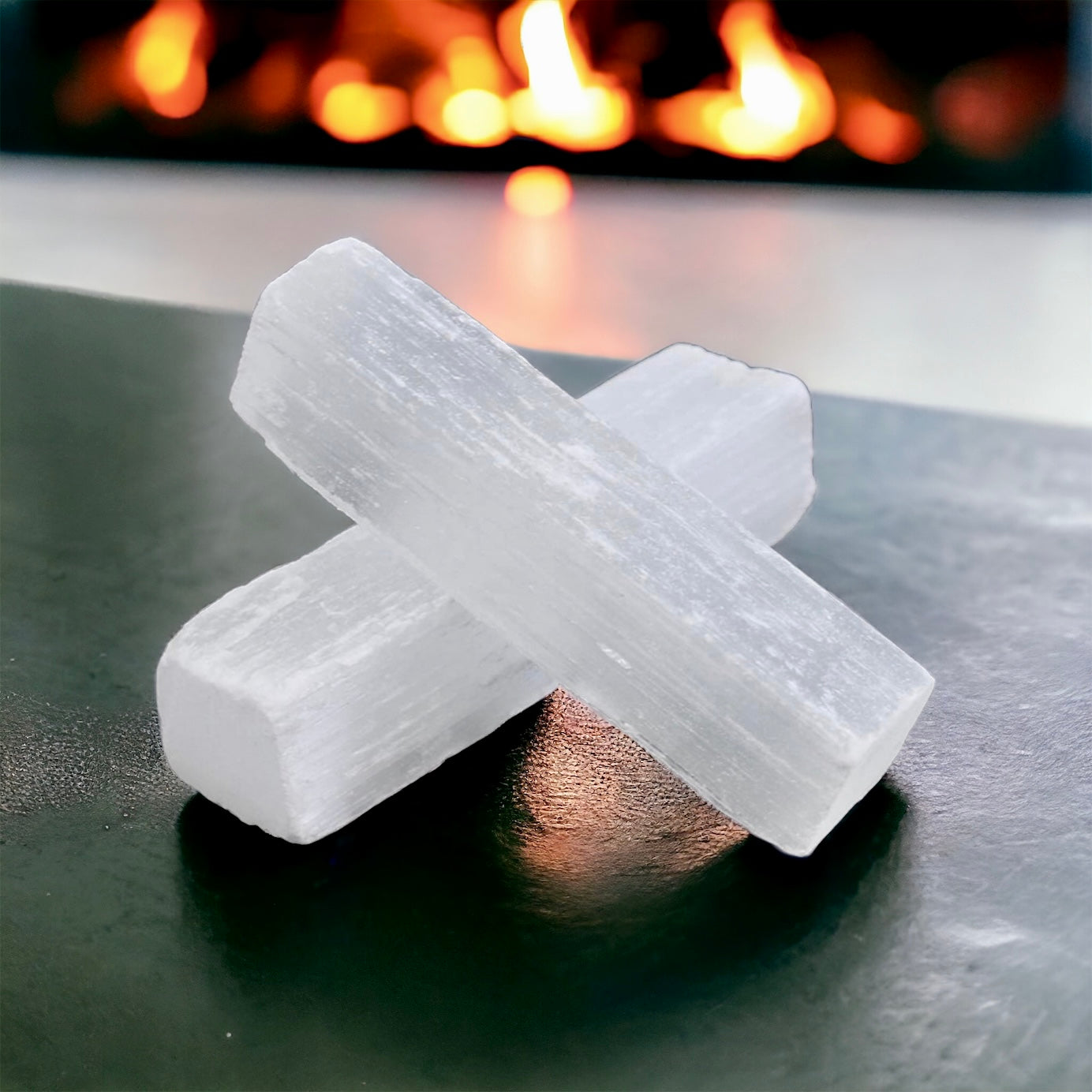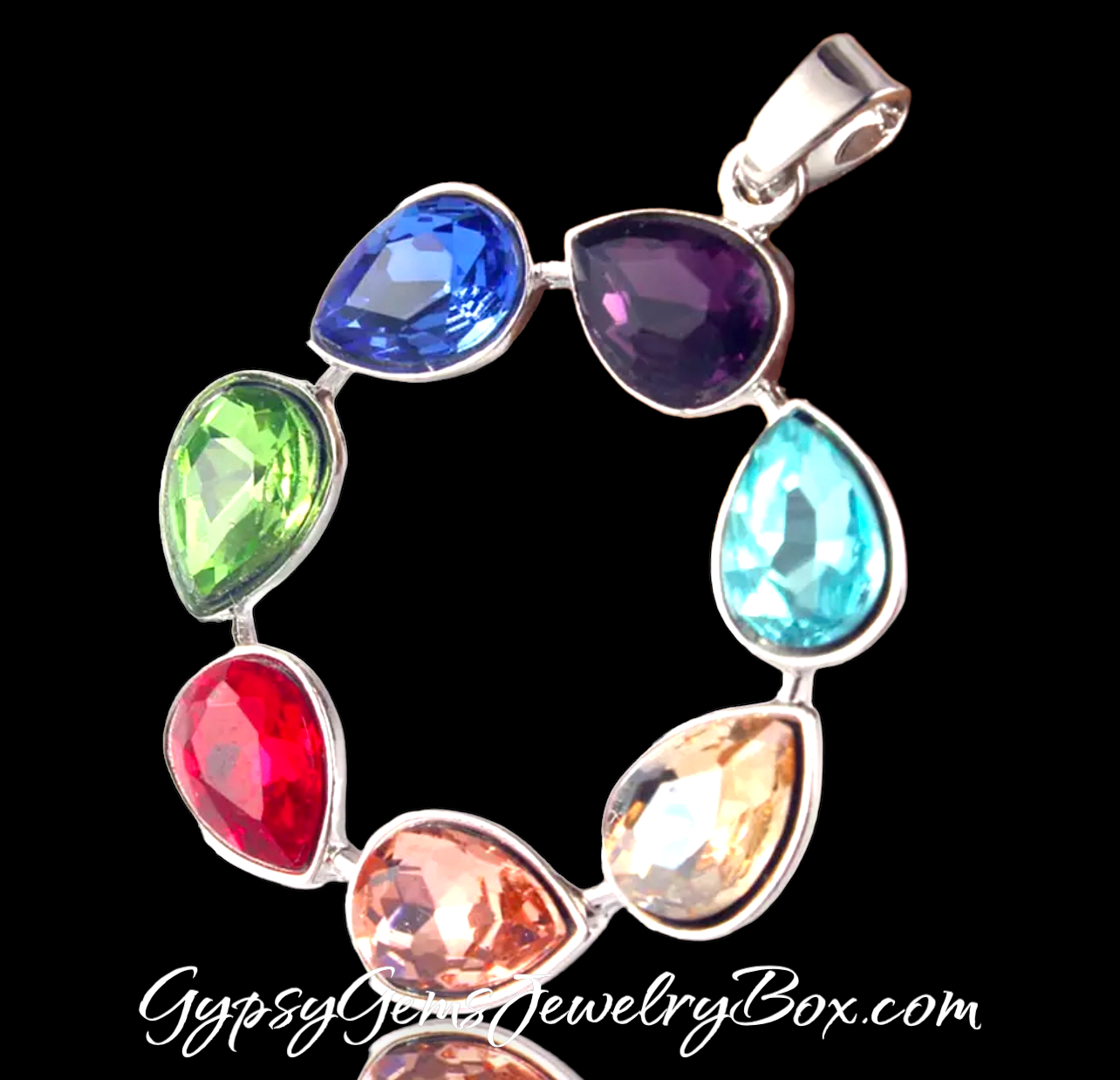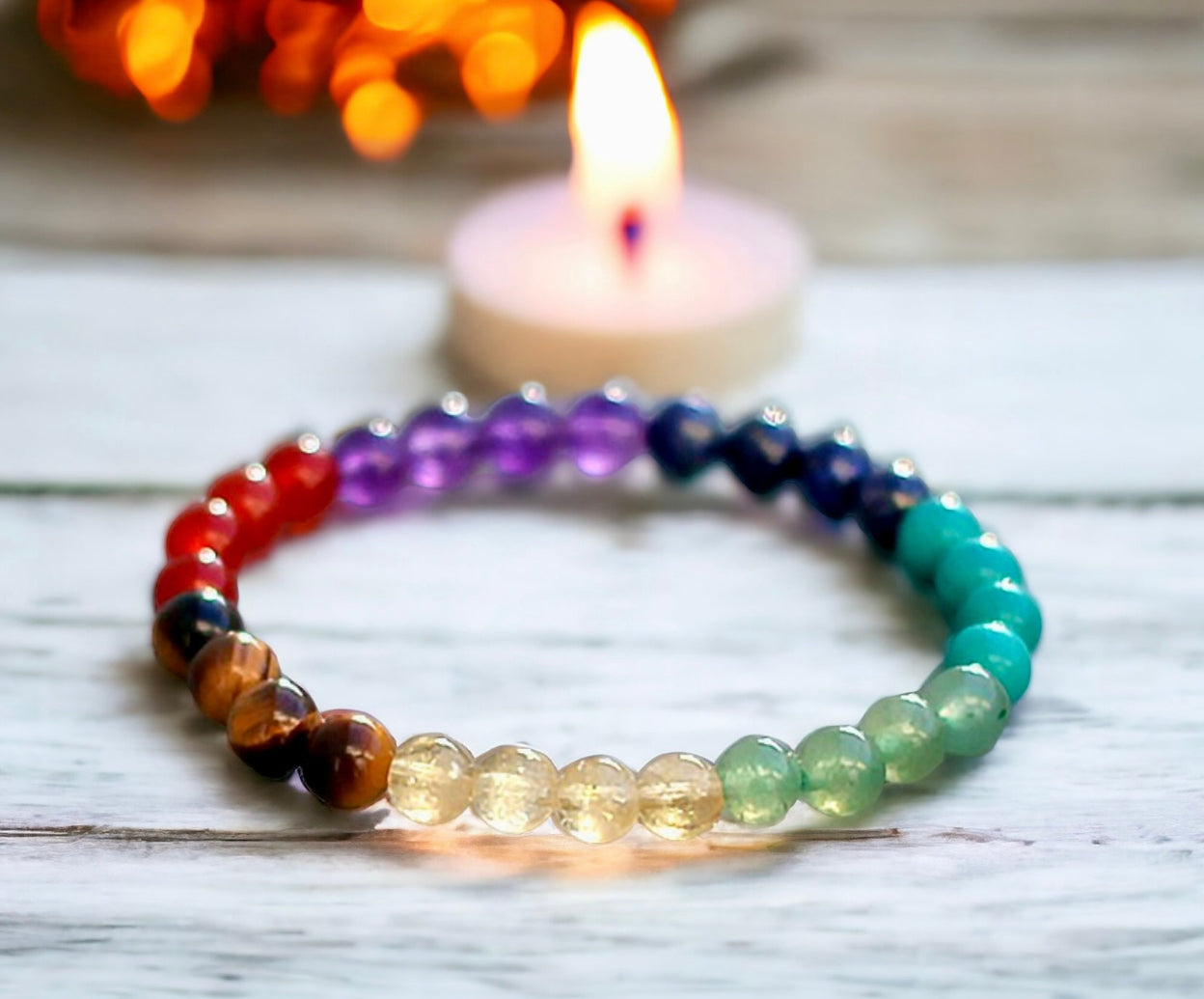
In the quest for balance and harmony, many people turn to holistic practices that promote well-being. Among these practices, the Chakra system and Feng Shui are two powerful approaches that focus on energy. While both aim to enhance our lives, they stem from different cultural backgrounds, serve distinct purposes and have different colors and/or element associations linked to them. In this blog, we’ll explore the key differences between Chakras and Feng Shui in a simplified way, and we will learn how understanding both can transform your personal and environmental energy.
What Are Chakras?
Follow this link to our 7 Chakra Energy Center - The Seven Chakras Explained - How to Keep them Balanced
Chakras are energy centers within the body, rooted in ancient Indian spiritual traditions. There are seven main chakras, each located along the spine and corresponding to specific physical, emotional, and spiritual aspects of our being.
Here’s a brief overview of the Seven Chakras with their associated Elements:
(Earth, Water, Fire, Air, Ether, Light)
---
---
---
3. Solar Plexus Chakra (Manipura)
---
4. Heart Chakra (Anahata)
Element - Air:
Love, compassion, and connection.
---
5. Throat Chakra (Vishuddha)
Element - Ether:
Communication and self-expression.
---
6. Third Eye Chakra (Ajna)
Element - Light:
Intuition and perception.
---
7. Crown Chakra (Sahasrara)
Element - Thought:
Spiritual connection and enlightenment.
---
Each chakra can become blocked or imbalanced, leading to physical or emotional distress. Practices like meditation, yoga, and energy healing are commonly used to balance the chakras and promote overall well-being.
---
---
What Is Feng Shui?

Feng Shui is an ancient Chinese practice focused on arranging the environment to promote harmony and balance. It operates on the principle of Qi (or Chi), the life force that flows through all living things. The five elements of feng shui—Wood, Fire, Earth, Metal, and Water—are used to create spaces that enhance energy flow and well-being.
Here’s a closer look at these elements:
(Wood, Fire, Earth, Metal, Water)
---
Growth, vitality, and creativity.
---
---
---
---
---
By arranging furniture, colors, and decor according to feng shui principles, individuals can create environments that promote positive energy and well-being.
---
---
Chakra VS Feng Shui
Key Differences Between Chakras and Feng Shui
---
1. Cultural Origins:
Chakras are rooted in Indian spiritual practices, while Feng Shui originates from Chinese philosophy.
---
2. Focus:
Chakras primarily focus on individual energy and personal well-being, while Feng Shui emphasizes environmental energy and space optimization.
---
3. Elemental and Color Associations:
Although both systems include some of the same element names, they categorize elements and color differently. For instance, the Orange Sacral Chakra is linked to Water, while Feng Shui’s Water Element represents flow and adaptability and is represented by the colors Blue and Black.
---

Exploring the Color Differences
Key Differences: Color Associations in Chakras and Feng Shui
Both the Chakra system and Feng Shui incorporate color as a vital tool for enhancing energy and promoting balance, but they associate colors differently based on their unique philosophies and purposes. Here’s a breakdown of the color associations in each system:
---

Chakra Color Associations
(Earth, Water, Fire, Air, Ether, Light)
---
1. Root Chakra (Muladhara)
Color - Red:
Represents grounding, stability, and security. Red is a powerful color that symbolizes vitality and survival.
---
![]()
2. Sacral Chakra (Svadhisthana)
Color - Orange:
Associated with emotions, creativity, and pleasure. Orange embodies enthusiasm and joy.
---
![]()
3. Solar Plexus Chakra (Manipura)
Color - Yellow:
Represents personal power, confidence, and will. Yellow symbolizes clarity, intellect, and energy.
---
Color - Green (and Pink):
Green represents love, compassion, and healing, while pink symbolizes unconditional love and emotional healing.
---
Color - Blue:
Signifies communication, expression, and truth. Light blue is often used for clarity and calmness.
---
Color - Indigo:
Associated with intuition, perception, and insight. Indigo promotes deep thinking and understanding.
---
Color - Violet or White:
Violet represents spiritual connection and enlightenment, while white symbolizes purity and unity with the universe.
---

Feng Shui Color Associations
(Wood, Fire, Earth, Metal, Water)
Feng shui also recognizes the significance of colors, but they are linked to the five elements (Wood, Fire, Earth, Metal, Water) and the energies they bring into a space:
---
Wood Element
- Green and Brown:
- Green is associated with growth and vitality, while brown represents stability and grounding.
---
Fire Element
- Red, Pink, and Orange:
- Red signifies passion and energy, pink represents love and warmth, and orange embodies enthusiasm and creativity
---
- Yellow, Beige, and Earth Tones:
- Yellow represents nourishment and stability, while beige and earth tones evoke a sense of grounding and comfort.
---
Metal Element
- White, Gray, and Metallic Colors:
- White symbolizes purity and clarity, gray represents neutrality and balance, and metallic colors (gold, silver) signify precision and structure.
---
Water Element
- Blue and Black
- Blue embodies calmness and tranquility, while black represents depth and mystery, encouraging adaptability and flow.
---
Summary of Differences
- Purpose: In the chakra system, colors are used to represent specific energy centers and their associated qualities, while in feng shui, colors correspond to elements that influence the energy of a space.
- Color Associations: Each chakra has a dedicated color that reflects its essence, while feng shui colors can be used interchangeably to balance elements and create harmony in the environment.
- Application: In chakra work, colors are often used in meditation, visualization, and healing practices, whereas in feng shui, colors are applied in decor, design, and arrangement of spaces.
---
By understanding these color associations and their meanings in both systems, you can more effectively harness their energies, whether you're focusing on personal healing through chakras or creating a balanced environment through feng shui.
---

Integrating Chakras and Feng Shui for Holistic Well-Being
Understanding both Chakras and Feng Shui can lead to a more comprehensive approach to well-being. Here are some tips for integrating these practices:
---
Balance Your Energy:
---
---
---
---
Conclusion
By exploring the key differences between chakras and feng shui, you can gain valuable insights into how to enhance your energy and overall well-being. Whether you're seeking to balance your chakras or create a harmonious living space, both practices offer powerful tools for transformation. Embrace the synergy of these two systems to cultivate a life filled with vitality, clarity, and peace.
















